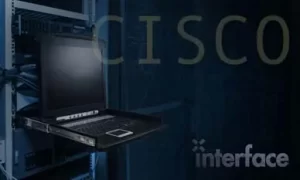You landed here because CCEI is recommended for the following:
DUCCE: Deploying Unified Contact Center Enterprise with CVP

Planning a Cisco Packaged Contact Center Enterprise Deployment
- Packaged CCE Component Overview
- Call Flows Review
Staging a Packaged CCE Deployment
- PCCE Deployment Planning and System Design Specification
- Software Compatibility and OS Requirements
Preparing CCE Software for Installation
- General Considerations and System Requirements
- Active Directory Considerations
Administering Security Certificates
- Security Certificate Overview
- Install and Configure Certificate Authority
Introducing the Packaged CCE Integration Wizard
- PCCE Inventory and Service Accounts
- Run the PCCE Wizard Adding a Site to Packaged CCE
Adding a Site to Packaged CCE
- PCCE Remote Site Overview
- Remote Site Security Certificate Considerations
Integrating Cisco Unified Intelligence Center, LiveData, and Finesse
- Compare Real Time vs. Live Data
- Complete Cisco Unified Intelligence Center Integration
Personalizing the Packaged CCE Dial Plan
- CCE Dial Plan Components
- Ingress Gateway and Cisco Unified Border Element Dial Plans Configuring to Validate Deployment
Configuring to Validate Deployment
- Confirm Configuration Readiness
- Cisco Unified Communications Manager Administration
Scripting for Packaged Contact Center Enterprise
- Configure Script Editor
- Use Microapps
Configuring Single Sign-On
- SSO Overview
- Configure SSO Prerequisites
Lab outline
- Navigate CCE Discovery Architecture and Components
- Explore ICM Configuration Tools
- Observe Installed CCE Software
- Navigate Certificate Store
- Add a Remote Site to PCCE
- Personalize Finesse Server
- Configure Site Dial Plan
- Verify Configuration Details for Final Testing
- Build a Series of Test Scripts
- Enable Single Sign-On
- Deployment Engineer
- Sales Engineer
The knowledge and skills that students are expected to have before attending this course are:
- Advanced knowledge of computer networking components – Windows A/D, SQL Server, and components
- Understanding of IP networks
- Strong understanding of Cisco Packaged Contact Center Enterprise functionality
- Advanced experience administering of Cisco Packaged Contact Center Enterprise
- Working knowledge of Unified Communications Manager and Voice Gateways
Here are recommended Cisco learning offerings that may help students meet these prerequisites:
- Cisco CCEF Course
- Cisco CCEA Course
- Cisco CCEAA Course
- Cisco CCNA Course
- Cisco CLFNDU Course
After taking this course, you should be able to:
- Examine components, protocols, and variables that influence selection of the design and sizing of a PCCE deployment
- Identify concepts necessary to create CCE system design specifications and deployment plans
- Configure an advanced VXML application implementing DB lookup functionality and digit collection; use Call Studio and CCE Scripting tools to present call data collected from the caller to the gent desktop
- Discover how to install CCE software
- Administer CA signed security certificates to support the successful addition of a PCCE site
- Identify the tasks associated with adding Remote Site functionality to the PCCE environment
- Discuss integration of the CUIC, LiveData, and Finesse reporting environments
- Configure the PCCE Dial Plan end-to-end, incorporating the use of Cisco Unified Border Element (CUBE), Cisco Unified SIP Proxy (CUSP), Cisco Virtualized Voice Browsers (VVBs), Voice XML (VXML) Gateways (GW), and Significant Digits
- Examine concepts necessary to create CCE system design specifications and deployment plans
- Create a series of routing scripts using PCCE
- Configure Single sign-on for Unified CCE
